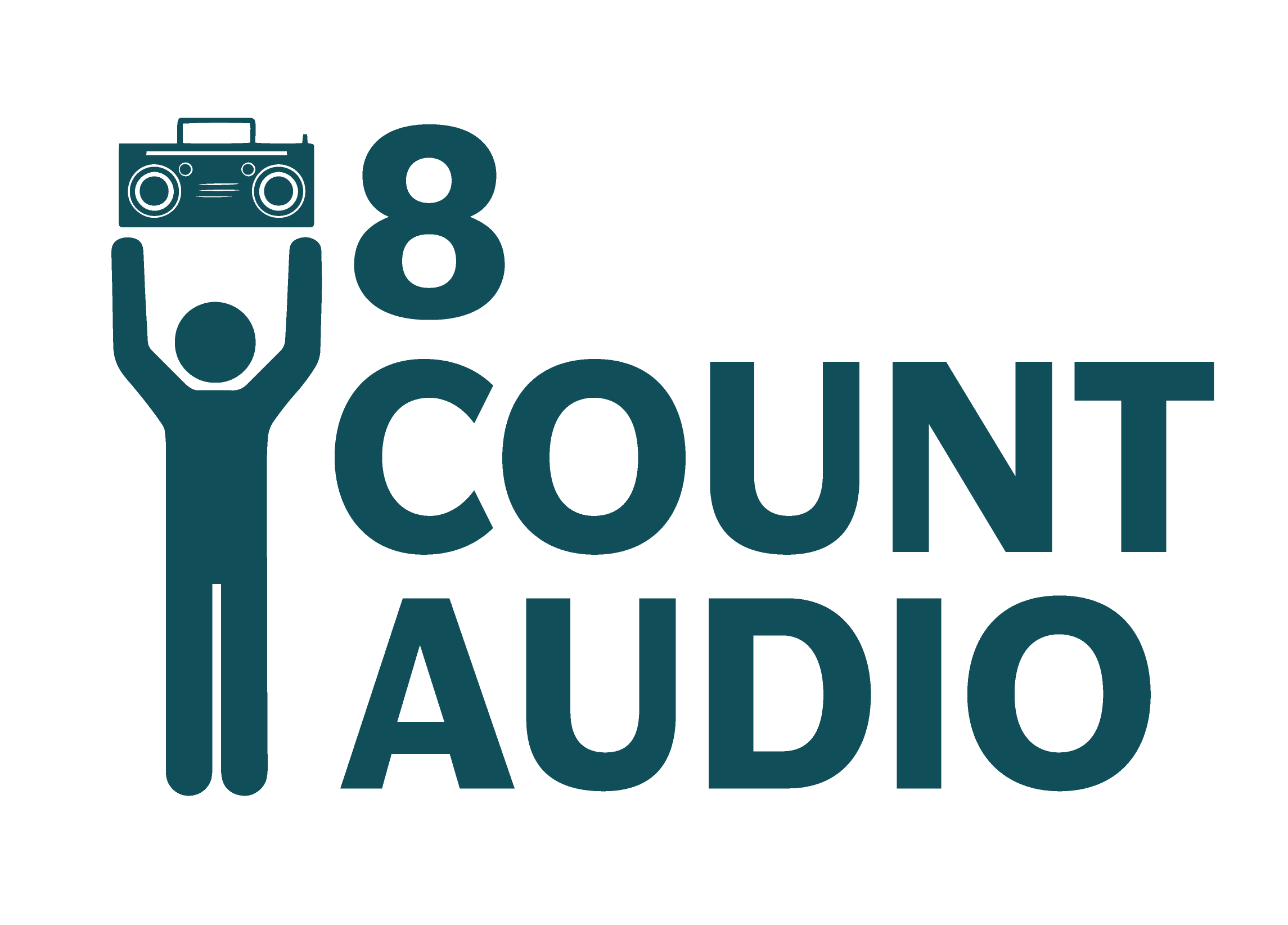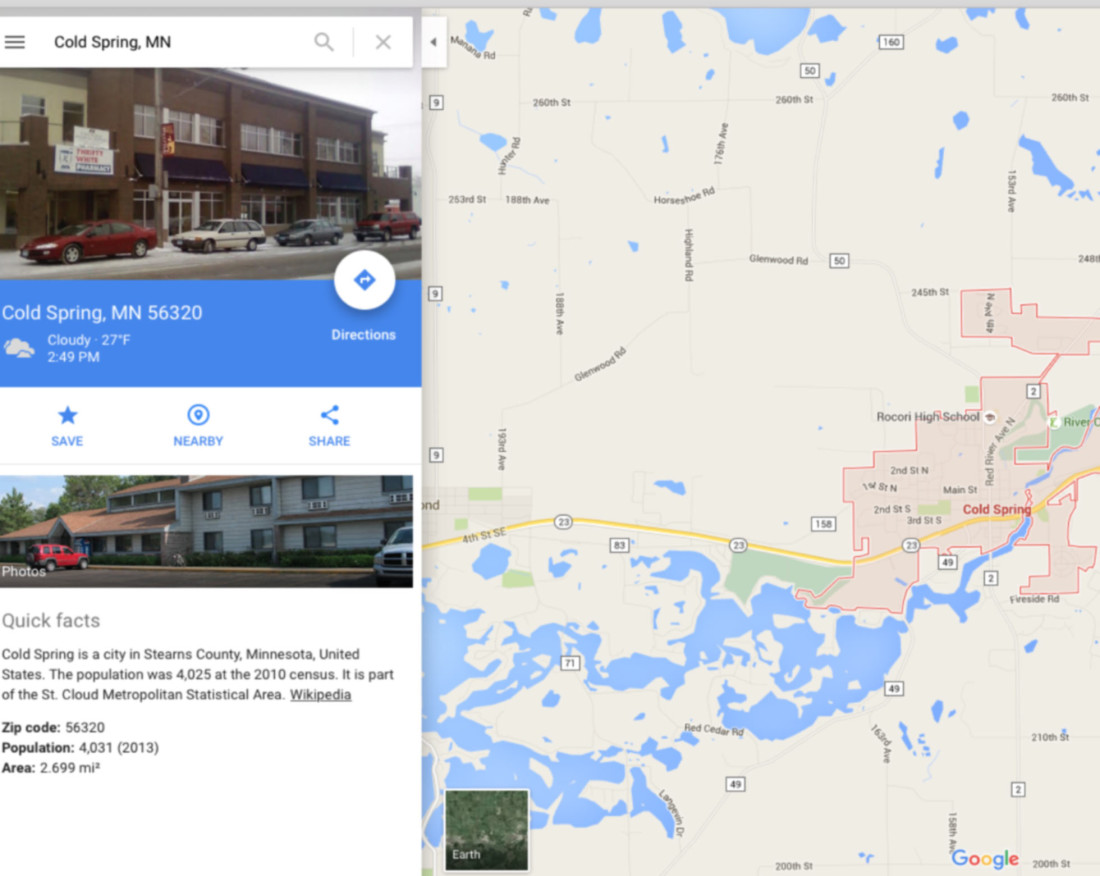An Illinois Dance Fan’s First Minnesota Competition
How is competitive dance done in Minnesota? I took a road trip to see for myself.
On the first weekend of 2016, I crossed something important off of my professional bucket list: a trip to Minnesota to watch a dance invitational. I had to pick an invitational that didn’t conflict with any Illinois ones, so our road trip took us to Rocori High School in Cold Spring, MN on January 2nd.
As I drove through the Minneapolis area on the way to the St. Cloud area (Rocori is about a half hour outside of St. Cloud, which is about an hour northwest of Minneapolis), I thought to myself, so this is where dance is the leading sport. The Twin Cities, the suburbs, the medium sized towns, the farming communities–it seems like everyone’s got a dance team.
The people are friendly, the facilities are nice, the food is tempting, and the Minneapolis suburbs look a lot like home. And for a Chicagoan spoiled by a warm November and December, it wasn’t that cold. Walking our dog around downtown Minneapolis on Sunday morning only slightly sucked.
Here are 8 things I took away from our New Year’s Weekend road trip:
1. It’s familiar
Parent volunteers dressed in somewhat gender-neutral t-shirts. Seven bucks to get in. Sweatshirts, smoothies, hot dogs and popcorn for sale. Enthusiastic parents cheering in the bleachers, a reassuring and occasionally dynamic PA announcer, a 20-minute wait between the last dance and the start of awards. All super familiar.
Also I enjoyed making quick work of this donut (I’m usually a sucker for baked goods at any competition back in Illinois).
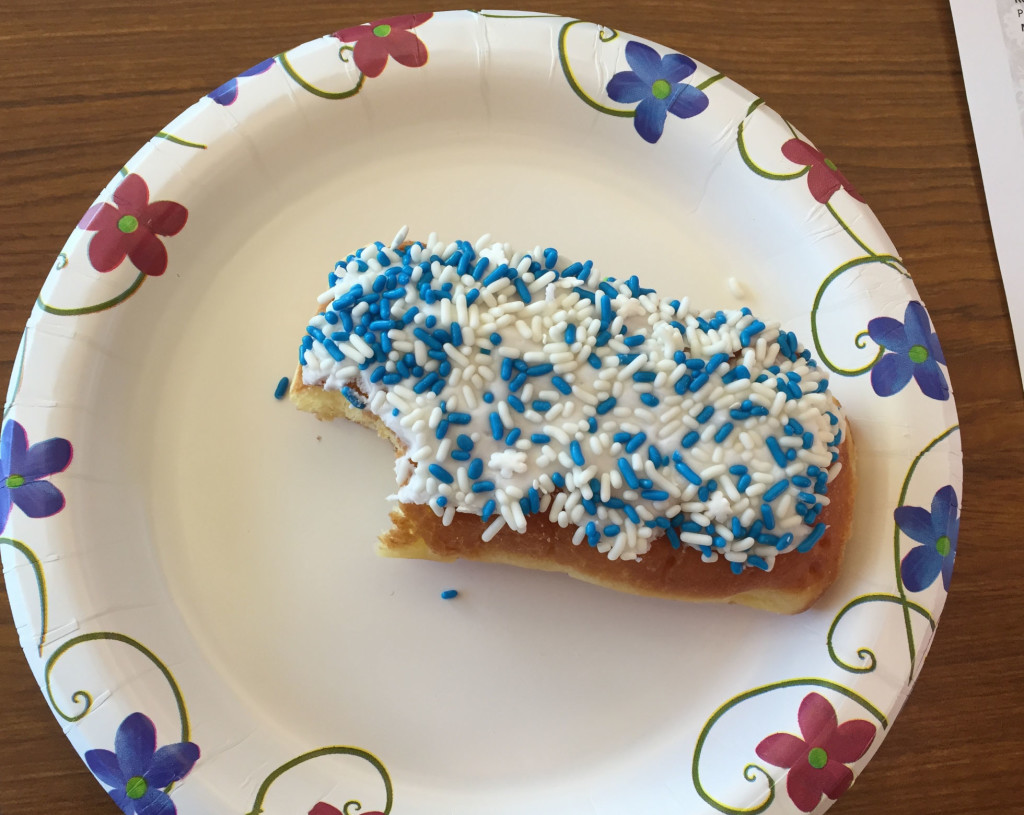
2. Judges
The announcer lets the crowd know who the judges are, what position each holds that day, and what organization they’re part of. In this case the judges are from JAM, or the Judges Association of Minnesota Dance Teams. Judges aren’t restricted to wearing black and white, so for the sake of personal expression, that’s got to be a plus. Their setup was familiar to me: a marked-off section for privacy, food baskets, and volunteer runners jogging up and down the bleachers with big envelopes.
Judges switch sides for the second half of a category of competitions, but so does the second half of that field. The net effect is that the same judges stick with the same teams in a category, but halfway through, both switch sides for a fresh perspective.
3. Schedule
Fans and parents, you’ve been there before: breaking numerous traffic laws, creating your own parking spot, and then “making” space in a little opening in the bleachers just to get to that 10:41 performance. Minnesota takes the drama out of this adventure by sensibly not assigning exact performance times for each dance.
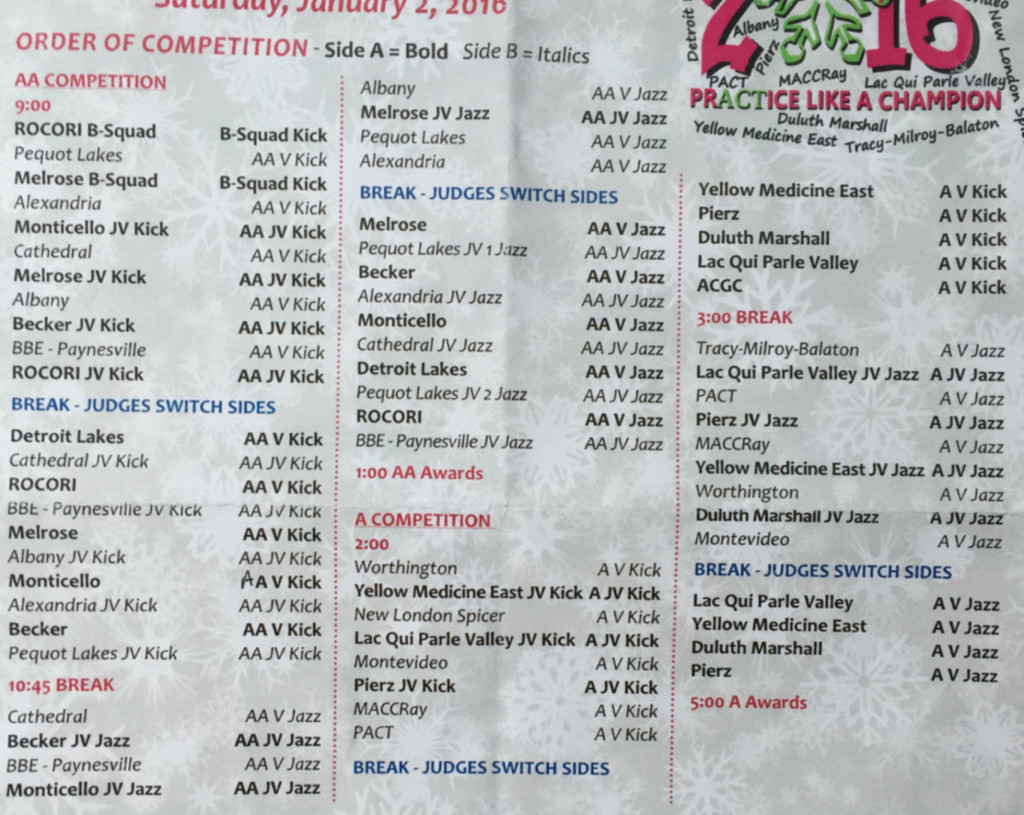
This also encourages fans to take in the entire set of dances for a particular category. One downside is that it’s slightly harder to plan that quick escape to the bathroom or concession stand! And there’s no easy way to reply to that classic text, “Are they running behind or on schedule?”
4. Categories…CATEGORIES!
Today’s competition only featured A and AA schools (AAA schools got to relax for the last days of their winter break), with the AA teams dancing in the morning and A going after lunch. Teams competed in two categories. High Kick was pretty much what you’d expect but a lot faster. Jazz roughly translates to Illinois’ former categories of lyrical and “open dance,” though many of the routines in this category leaned toward either straight-up jazz or upbeat-lyrical. All of the AA teams and most of the A schools competed in both categories.
Most varsity teams had a JV competing as well. One of the JV teams performed two jazz dances. A couple schools had “B Squads” that serve the same role as the rare “halftime performance / non-competition” teams a few schools in Illinois have. The difference? Everyone competes in Minnesota, even those that we would call halftime teams.
Yeah, having only two categories isn’t ideal, but it’s definitely more sensible than what we currently have in Illinois!
5. Performances
Performances alternated sides so the flow of routines kept moving pretty smoothly, with JV facing one way and varsity the other. The only exception was when dances in the same category went back-to-back, with the judges needing a couple minutes to finish up scoring. Spectator doors opened up only after every other routine, so a few extra seconds were given for the crowd to shuffle in and out of the gym.
The audience heard the familiar “up next…in the hole…” announcements, and just as teams took the floor, their coaches and captains got their names read, along with the title of the routine.
Teams took their initial set with a “5-6-7-8” from a captain. The varsity or JV team sat in a line of folding chairs to either side of the announcer’s table and got to cheer on their teammates up close. Coaches sat at a table next to the announcer, and so an easy nod or point of the hand made it easy for the music person to know when to hit play. And from my vantage point it was all CDs–no smartphone cables to fiddle with!
That coaches’ table comes in handy for kick routines when a coach wants to slam it to emphasize the tempo of a kick upswing / downswing. One coach really let that table know who was boss as the DJ nervously looked over at her wondering which table-hit was going to cause the CD to skip (it somehow didn’t).
After the dance the announcer called out the team’s name while the crowd cheered. Only then could the fans wave their homemade signs since they’re not allowed to during the actual performance–something I’m sure the judges and other fans appreciate. A few extra seconds are saved since coaches simply exit the gym with their dancers without having to stop at the music table (CDs are claimed after awards).
6. Music fails happen there, too
I don’t think it had to do with a coach pounding the table, but the music did fail a couple times. As you guys know, this is an awful moment but it’s also decision time for both the dancers and the coaches: stop or count it out?
The first time it happened, it sounded like the CD skipped a couple times and somehow the team, coaches, and judges called off the performance right away. An official quickly made her way down the bleachers and after a few seconds of conversation with the coaches, the announcer said they’d be back to perform at the end of the category.
The second incident involved the music just cutting out completely, but the team continued counting out their routine for a few seconds before the coaches and judges finally made the stoppage official. They, too, got to come back later to dance their routine.
7. Kick is a really big deal
I’m not yet sure how it is for AAA, but it looks like that the high kick category is huge for the smaller A and AA schools (mostly rural areas and private schools in small cities like St. Cloud). Like I said above, these kick dances are pretty fast, maybe something like an Illinois pom routine. Some are big-time productions with serious costumes, and almost all of them have a theme.
Heavy, boomy bass beats (almost ’90s style, to my ears) are a big staple of the remixes. Think “the roof is on fire!” kind of bass beat circa 1993-94, or maybe the “cha cha slide” sound from around 2000.
More than a few kick and jazz dances featured a very specific snare drum that sounds like what you hear a marching band’s routine start with. It could be a tradition or just the habit of a certain DJ up there, but you’ll hear this particular drum sound either start a dance or overlaid within the beats of the music later in the song.
These teams seem to like a really snappy kind of hinge kick. Mixed in are more sweeping fan kicks than I usually see in our kick routines, but just like here, lots of jazz is woven into the entire dance. Unison is exceptionally strong up there–the dancers’ timing isn’t just tight and clean, but it’s locked in.
Jazz, on the other hand, didn’t seem to have as much synchronicity. The exception was host school Rocori, whose jazz routine’s polish would fit in perfectly with the top teams in the Chicago and St. Louis suburbs. There was also a pretty big gap in talent between varsity and JV, something like what we used to see in Illinois up until about 7 or 8 years ago.
8. Awards
AA teams all went in the morning session and their awards came at around 1:00. About 15 to 20 minutes passed between the final dance and the start of awards. At that point, teams came out on the floor (that’s right–no dance party, no cupid shuffling or flexing or hitting of the quan). Teams line up vertically facing the side they performed for and the announcer calls out each team, making sure they’re actually out there, ostensibly for “taking attendance” but really to give each team the spotlight for a moment.
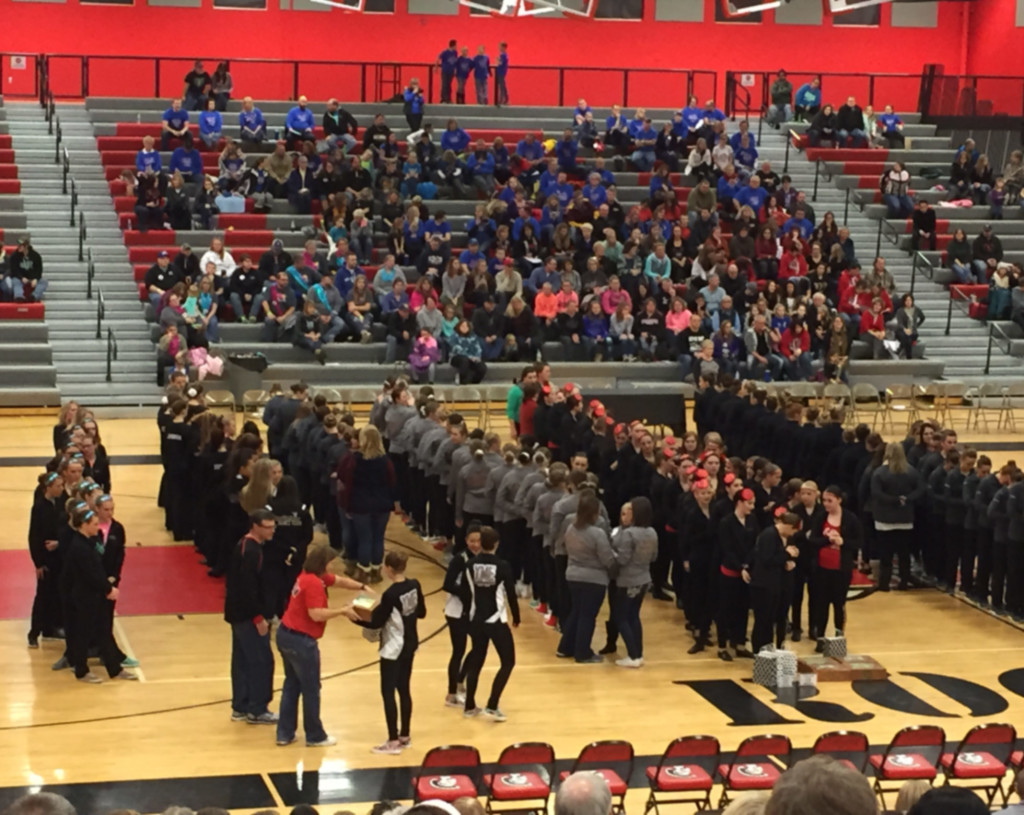
The awards table had several brown boxes which I assumed contained plaques, along with gift bags underneath. I soon found out how wrong, how deliciously wrong, I was.
First a little about the rankings. From what I could figure out, placements are based on your “rank point total.” I’m guessing that each judge takes their scores in a category and then ranks the teams. The ranks of all the judges are added up for the “rank point total,” and so the lower the number, the better. In this system, your best possible rank point total is 3, since each of the 3 judges had you in first place based on their scores. That “3” means a first place trophy, but it’s possible to finish 1st with a rank point total of, say, 4.
About the top half of the field in each category was announced with their scores. These teams received plaques, but about half of them also took home an actual cake from the local bakery–the same bakery responsible for the outstanding donut I ate before the first dance! I don’t think that baked goods are handed out at every competition, but I hope I’m wrong. Either way, this was quite the first impression of a Minnesota awards ceremony. I was moved to let the Illinois Dance Community know that sometimes the best prizes are edible.
Top 3 teams in each category at todays comp in Cold Springs, MN each get a trophy AND a cake from the local bakery. Lets do this in IL
— 8CountAudio-Illinois (@8CountAudio) January 2, 2016
Thanks goes out to Rocori for hosting the competition, Cold Spring Bakery for having awesome Christmas cookies leftover, and the Hampton Inn in Rogers, MN for being so dog-friendly!

